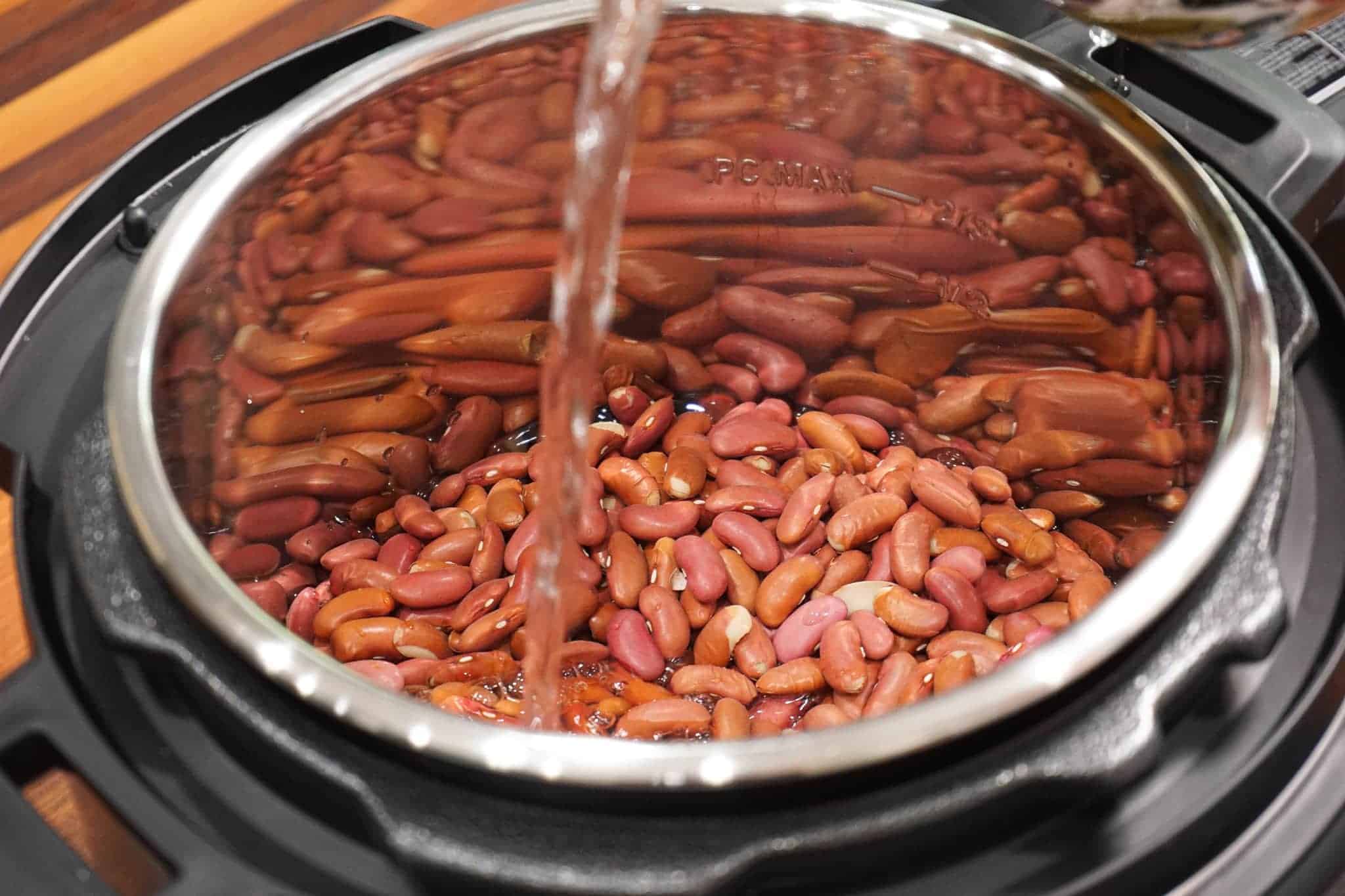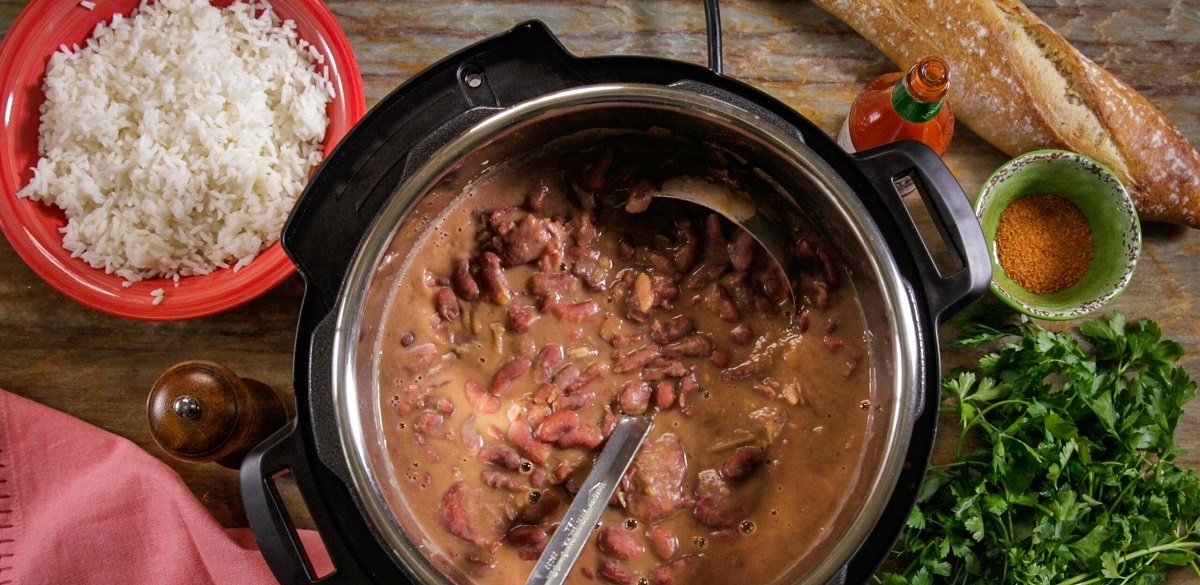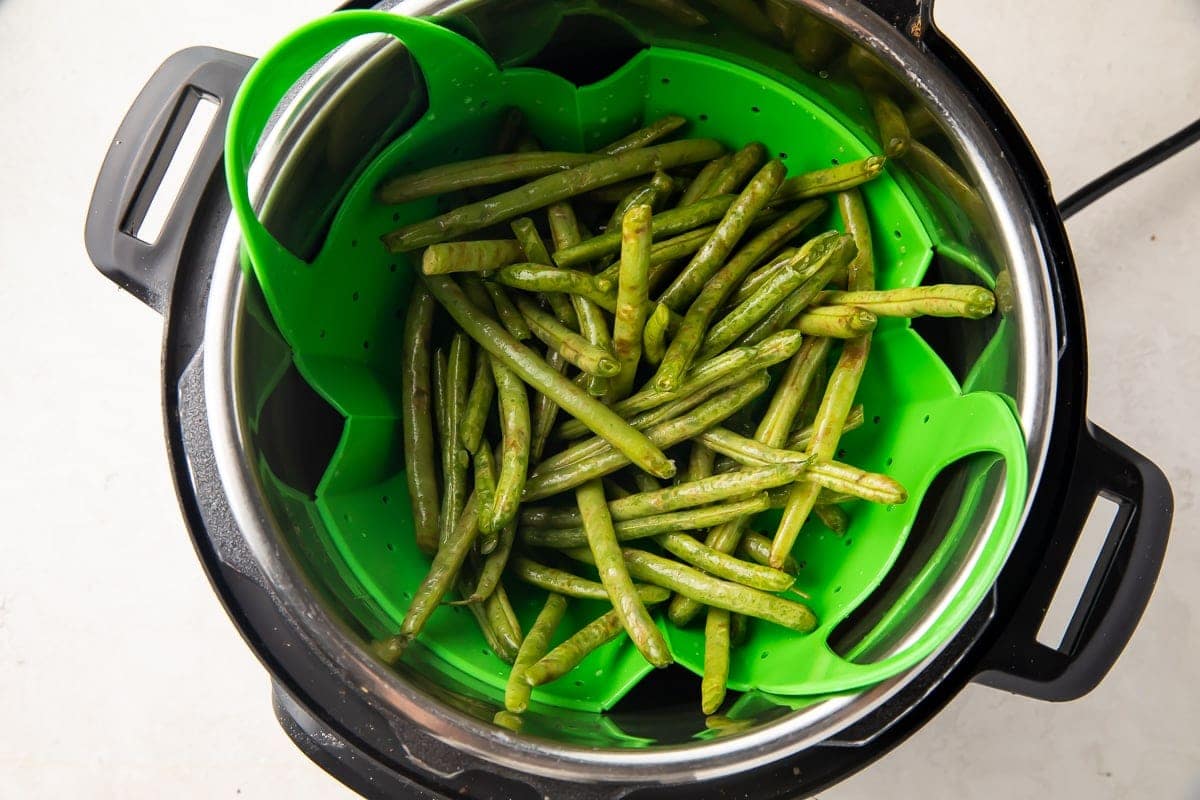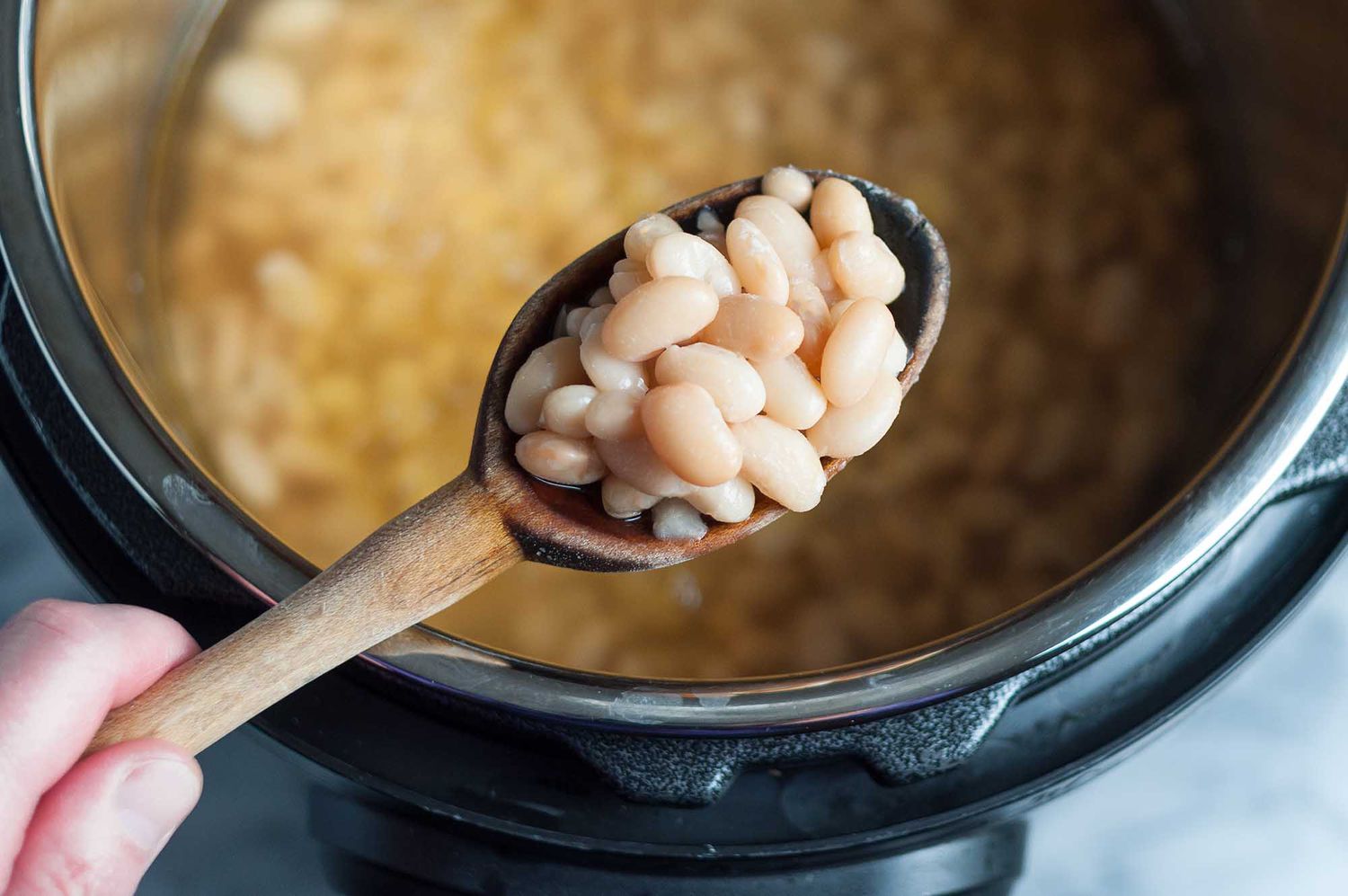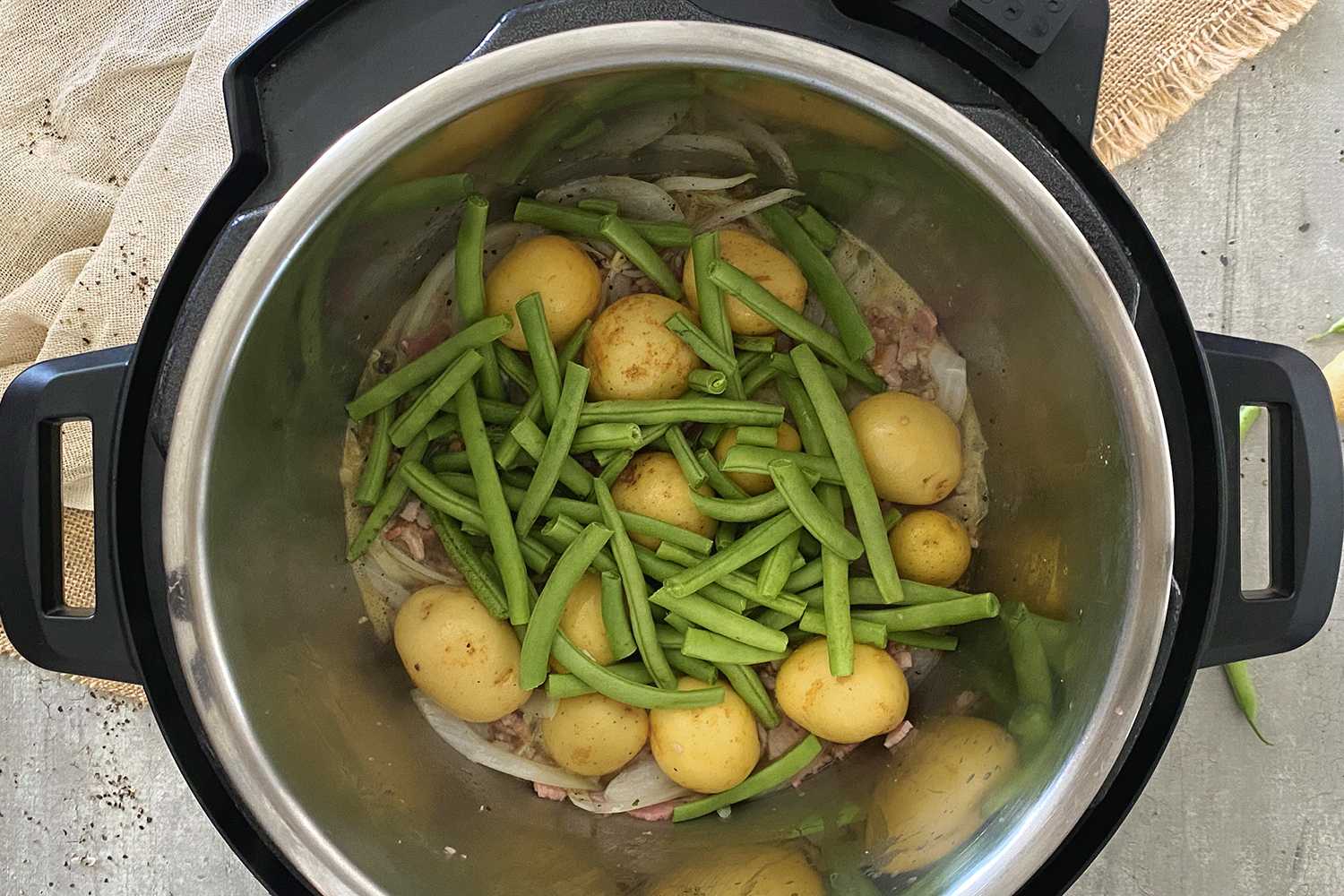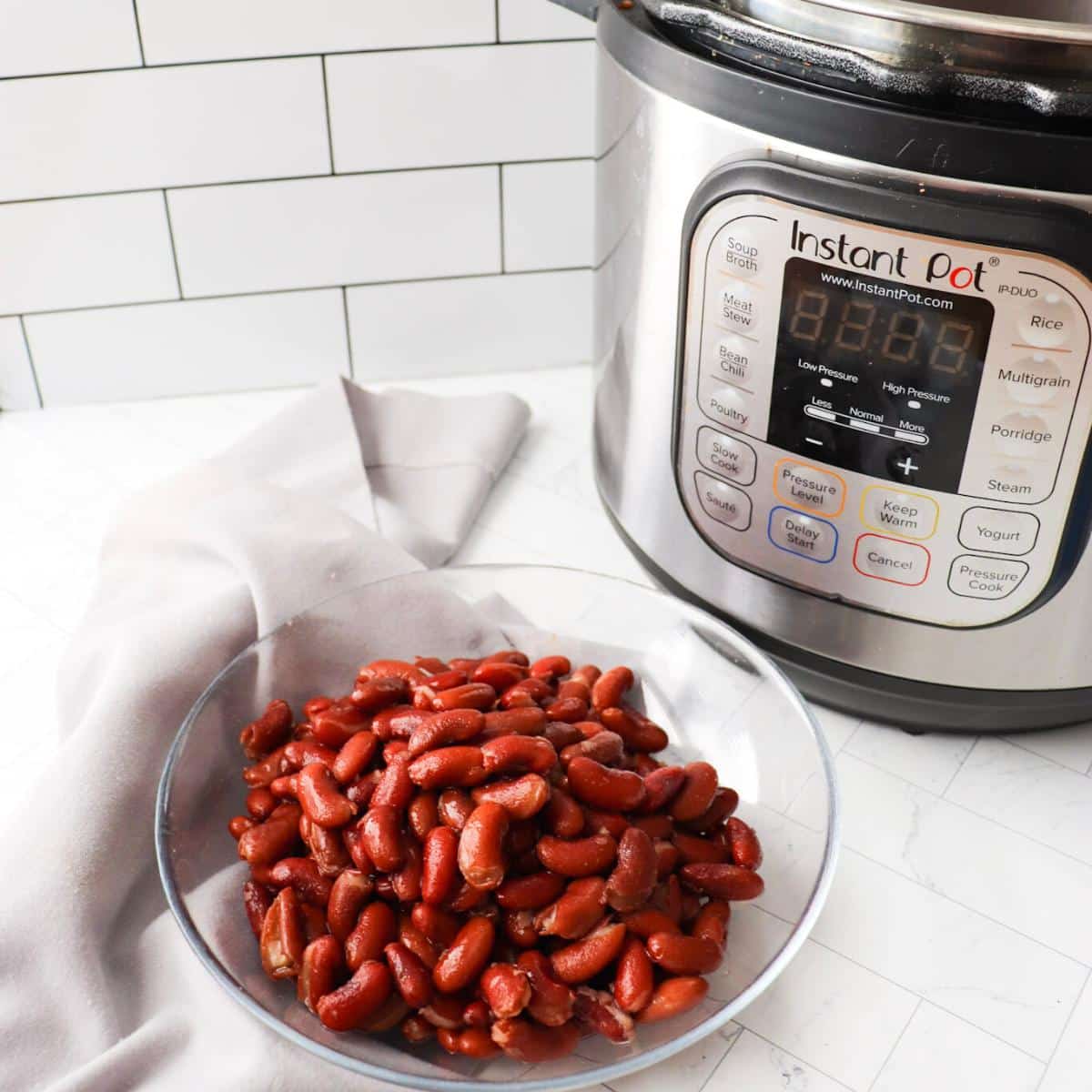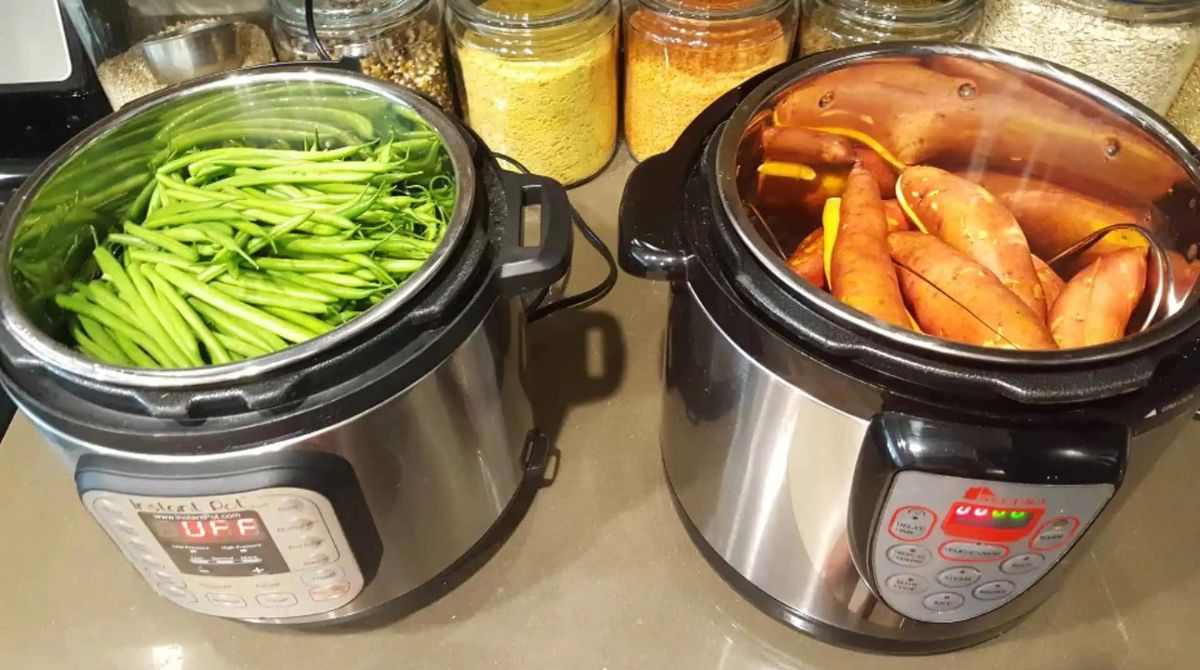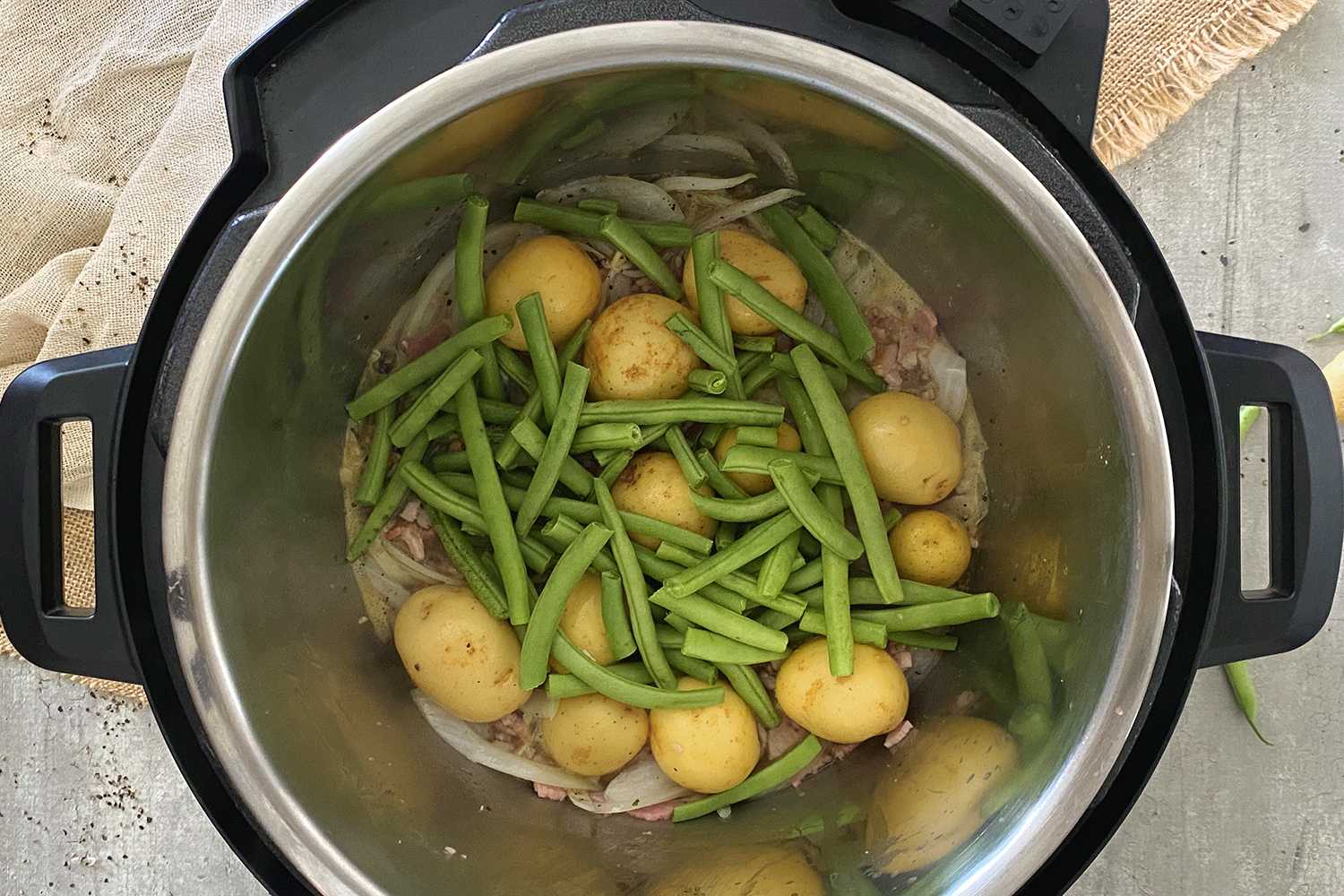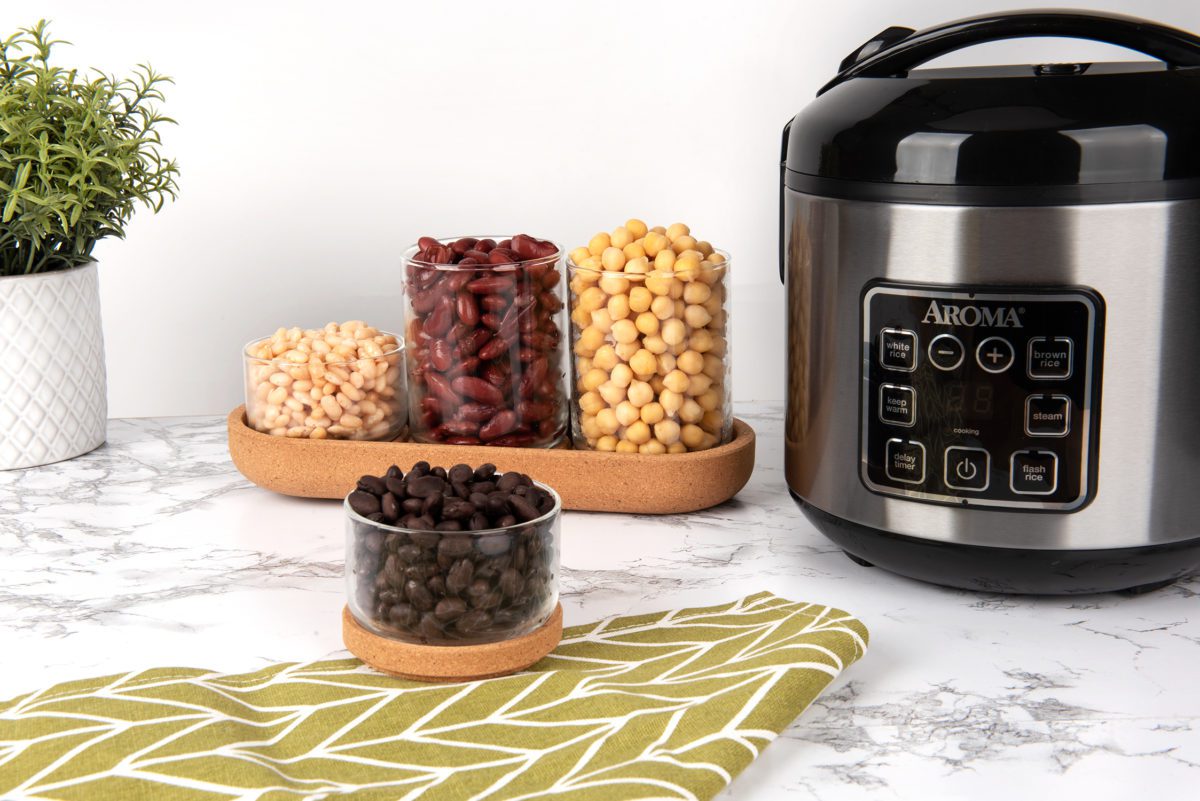Soaking Red Beans
Soaking red beans before cooking them in an electric pressure cooker can help to reduce cooking time and improve the overall texture of the beans. While it is not necessary to soak red beans, doing so can yield better results.
To soak red beans, start by rinsing them thoroughly under cold water to remove any dirt or debris. Then, transfer the beans to a large bowl and cover them with enough water to ensure they are fully submerged. Allow the beans to soak for at least 6 hours or overnight.
During the soaking process, the beans will absorb water and begin to soften. This helps to break down the complex starches and sugars, making them easier to digest. Soaking also helps to remove some of the gas-causing compounds, which can help reduce the chances of experiencing digestive discomfort.
After soaking, drain and rinse the beans again before adding them to the electric pressure cooker. Discard the soaking liquid and replace it with fresh water or broth to cook the beans.
Soaking red beans is especially beneficial if you are short on time and want to reduce the overall cooking time. By soaking the beans beforehand, you can cut down the cooking time by half, resulting in tender and creamy beans in a fraction of the time.
However, if you are in a hurry or forgot to soak the beans ahead of time, do not worry. It is still possible to cook red beans without soaking them, although the cooking time may be slightly longer.
Now that you understand the importance of soaking red beans, let’s move on to preparing the beans in an electric pressure cooker!
Preparing Red Beans in an Electric Pressure Cooker
Now that you have soaked your red beans (or decided to cook them without soaking), it’s time to prepare them in your electric pressure cooker. Follow these steps for deliciously cooked red beans:
- Drain and rinse the soaked red beans or rinse the unsoaked beans under cold water to remove any impurities.
- Place the rinsed beans in the cooking pot of your electric pressure cooker.
- Add enough fresh water or broth to cover the beans. You should generally use about 2 cups of liquid for every 1 cup of dried beans.
- Add any desired seasonings or aromatics, such as diced onions, garlic, bay leaves, or spices. This will help infuse the beans with flavor during the cooking process.
- Secure the lid on the electric pressure cooker and ensure that the pressure release valve is set to the sealing position.
- Select the desired cooking time and pressure level on your electric pressure cooker. The cooking time for red beans in an electric pressure cooker is typically around 25 minutes on high pressure.
- Start the cooking process by pressing the “Start” button on your electric pressure cooker. It will take some time for the pressure to build up before the actual cooking begins.
- Once the cooking time is complete, allow the pressure to release naturally for about 15 minutes. This helps to further tenderize the beans and allows the flavors to meld together.
- After the natural pressure release, you can release any remaining pressure by carefully turning the pressure release valve to the venting position.
- Once the pressure has fully released, remove the lid of the electric pressure cooker and check the texture of the red beans. They should be tender and creamy but still hold their shape.
And there you have it! Your red beans are now ready to be seasoned and devoured. Speaking of seasoning, let’s explore how to add a burst of flavor to your red beans in the next section.
Cooking Red Beans Without Soaking
If you don’t have the time or forgot to soak your red beans, don’t worry! You can still cook them in an electric pressure cooker without soaking, although the cooking time may be slightly longer.
Here’s how to cook red beans without soaking:
- Start by rinsing the red beans under cold water to remove any dirt or debris.
- Place the rinsed beans in the cooking pot of your electric pressure cooker.
- Add enough fresh water or broth to cover the beans. A general rule is to use about 3 cups of liquid for every 1 cup of dried beans when cooking without soaking.
- Just like when cooking with soaked beans, you can add seasonings or aromatics to enhance the flavor of the red beans.
- Secure the lid on the electric pressure cooker and make sure the pressure release valve is set to the sealing position.
- Select the cooking time and pressure level on your electric pressure cooker. When cooking red beans without soaking, it usually takes around 35-40 minutes on high pressure.
- Press the “Start” button to begin the cooking process. The pressure will take some time to build up.
- Once the cooking time is complete, allow the pressure to release naturally for about 15 minutes. This helps to further soften the beans.
- Release any remaining pressure by turning the pressure release valve to the venting position.
- Open the lid and check the texture of the red beans. They should be tender and creamy.
Cooking red beans without soaking may take a bit longer, but it is still a convenient and hassle-free method. The electric pressure cooker helps to speed up the cooking process while ensuring that the beans are cooked to perfection.
Now that your red beans are cooked, it’s time to add some delicious seasonings to elevate their flavor. We’ll explore how to season your red beans in the next section.
Seasoning Your Red Beans
Seasoning is an essential step in enhancing the flavor of your cooked red beans. While the cooking process itself imparts some flavor, adding additional seasonings can take your dish to the next level. Here are some common seasonings and ingredients you can use to make your red beans irresistible:
- Onions and Garlic: Sautéing diced onions and minced garlic in a bit of oil or butter before adding them to the cooked red beans can add a rich and savory flavor.
- Herbs and Spices: Experiment with a variety of herbs and spices to create a flavorful blend. Commonly used options include bay leaves, thyme, cayenne pepper, paprika, and cumin. Adjust the amounts to suit your taste preferences.
- Smoked Meat: Adding smoked meat, such as ham hock, bacon, or sausage, can infuse your red beans with a delicious smoky flavor.
- Hot Sauce: For those who enjoy a bit of heat, a dash of hot sauce or a sprinkle of cayenne pepper can add a spicy kick to your red beans.
- Vinegar or Lemon Juice: Adding a splash of vinegar or a squeeze of lemon juice right before serving can brighten the flavors and balance the richness of the beans.
- Salt and Pepper: Don’t forget to season your red beans with salt and pepper to enhance the overall taste. Add it slowly and taste as you go to achieve the perfect balance.
- Fresh Herbs: Finely chopped fresh herbs, such as parsley or cilantro, can add a burst of freshness to your dish. Sprinkle them on top as a garnish right before serving.
Remember, the amount of seasoning you use will depend on your personal preference and the desired flavor profile of your red beans. Start with a small amount, taste, and adjust accordingly. Don’t be afraid to get creative and experiment with different combinations of seasonings to find your perfect flavor.
Now that your red beans are seasoned to perfection, it’s time to discuss the cooking time required for the beans to be tender and delicious in an electric pressure cooker.
Cooking Time for Red Beans in an Electric Pressure Cooker
The cooking time for red beans in an electric pressure cooker can vary depending on whether or not you soaked the beans beforehand. Here are the general guidelines for cooking red beans in an electric pressure cooker:
If you soaked the beans:
With soaked red beans, the cooking time is reduced, resulting in tender and creamy beans. Typically, it takes around 20 to 25 minutes on high pressure to cook soaked red beans in an electric pressure cooker. Remember to allow for natural pressure release after the cooking time is complete to further tenderize the beans.
If you did not soak the beans:
Cooking red beans without soaking will require a longer cooking time to achieve the desired texture. It usually takes around 35 to 40 minutes on high pressure to cook unsoaked red beans in an electric pressure cooker. Again, allow for natural pressure release for optimal results.
It’s important to note that these are general guidelines, and the actual cooking time may vary depending on various factors such as the type and quality of your beans, the elevation, and the specific model of your electric pressure cooker.
When cooking red beans, it’s always a good idea to check the texture after the pressure has released. If the beans are still too firm for your liking, you can always return them to the pressure cooker and cook for an additional few minutes. Remember, it’s easier to add more cooking time than to salvage overcooked beans.
Now that you have an idea of the cooking time for red beans in an electric pressure cooker, let’s move on to the different pressure release methods and how they affect the final result.
Natural Pressure Release vs. Quick Pressure Release
When cooking red beans in an electric pressure cooker, you have two main options for releasing the pressure: natural pressure release (NPR) and quick pressure release (QPR). Both methods have their advantages and can affect the texture and flavor of the beans.
Natural Pressure Release (NPR):
Natural pressure release involves allowing the pressure to release on its own without any intervention. After the cooking time is complete, you simply leave the electric pressure cooker undisturbed and allow it to cool down naturally. This process typically takes around 15 minutes.
NPR is beneficial for red beans because it allows for additional cooking time, resulting in beans that are even more tender and flavorful. The gradual release of pressure also helps to prevent any potential bean explosions or foaming that may occur when releasing the pressure quickly.
Quick Pressure Release (QPR):
Quick pressure release involves manually releasing the pressure from the electric pressure cooker immediately after the cooking time is completed. This is done by turning the pressure release valve to the venting position, allowing the steam and pressure to escape rapidly.
QPR is a convenient option if you’re short on time or need to quickly stop the cooking process. However, it’s important to note that when using QPR, the beans may not be as tender as when using NPR. This is because the beans haven’t had the opportunity to continue cooking and softening during the gradual release of pressure.
The choice between NPR and QPR depends on your preference and time constraints. If you can afford to wait a bit longer for the beans to be perfectly tender, using NPR is recommended. However, if time is of the essence, QPR will allow for a quicker release and immediate access to your cooked beans.
Now that you understand the difference between NPR and QPR, let’s move on to the next section where we’ll explore how to check the texture of your red beans.
Checking the Texture of Red Beans
Checking the texture of your red beans is an important step to ensure they are cooked to your desired level of tenderness. Here are a few methods you can use to assess the texture of your cooked red beans:
- Visual Inspection: Take a look at the beans and observe their appearance. They should be plump, tender, and soft, but still hold their shape. If the beans still appear firm or have a chalky texture, they may require additional cooking time.
- Taste Test: Using a spoon or fork, take a few beans out of the pot and give them a taste. The beans should be creamy and easy to bite into, with a smooth texture. If they are still grainy or have a starchy taste, they may need more cooking time.
- Mashing Test: Take a spoonful of beans and gently press them against the side of the pot or a plate. The beans should easily mash or break apart when applying light pressure. If they are resistant and don’t mash easily, they need more cooking time.
- Texture and Consistency: Consider the overall texture and consistency of the dish. The red beans should be thick and velvety, with a slight creaminess. If the beans are still watery or too thin, they may require more cooking time to thicken up.
- Personal Preference: Ultimately, the texture of the red beans is a matter of personal preference. Some people prefer their beans to be firmer, while others like them to be softer and more creamy. Adjust the cooking time accordingly to achieve your preferred texture.
By utilizing these methods, you can ensure that your red beans are cooked to perfection. Remember, if the beans are not yet tender enough to your liking, you can always return them to the pressure cooker and cook for a few more minutes.
Now that you know how to check the texture of your red beans, let’s explore some delicious serving suggestions to enjoy these flavorful legumes.
Serving Suggestions for Red Beans
Red beans are a versatile and delicious ingredient that can be enjoyed in a variety of ways. Here are some serving suggestions to help you make the most of your cooked red beans:
- Classic Red Beans and Rice: Serve your cooked red beans over a bed of steamed white rice for a classic and hearty meal. Add a sprinkle of green onions or cilantro on top for a burst of freshness.
- Red Bean Soup or Stew: Use your cooked red beans as a base for a comforting soup or stew. Add vegetables, herbs, and spices to create a flavorful and nourishing dish.
- Red Bean Dip: Mash or blend the cooked red beans with some olive oil, lemon juice, and seasonings to create a delicious dip. Serve it with tortilla chips, pita bread, or fresh vegetables for a flavorful appetizer or snack.
- Red Bean Salad: Toss the cooked red beans with your favorite salad greens, vegetables, and a tangy vinaigrette for a refreshing and protein-packed salad.
- Red Bean Tacos or Burritos: Fill your tortillas with cooked red beans, along with your choice of toppings such as cheese, avocado, salsa, and sour cream, to create scrumptious tacos or burritos.
- Red Bean Sides: Use your cooked red beans as a flavorful side dish alongside grilled meats, roasted vegetables, or sautéed greens.
- Red Bean Patties or Burgers: Mash the cooked red beans with breadcrumbs, spices, and an egg to form patties. Pan-fry or bake them to create delicious vegetarian bean patties or burgers.
- Red Bean Chili: Add your cooked red beans to a pot of chili along with ground meat, tomatoes, spices, and chili peppers for a hearty and comforting dish.
- Red Bean Desserts: Believe it or not, red beans can also be used in desserts! Create red bean paste or puree to use as a filling in mochi, buns, or other sweet treats for a unique and delicious twist.
These are just a few ideas to get you started, but feel free to get creative with how you serve your cooked red beans. The possibilities are endless!
Now that you have a variety of serving suggestions, it’s time to put your deliciously cooked red beans to good use and enjoy your flavorful culinary creations.







